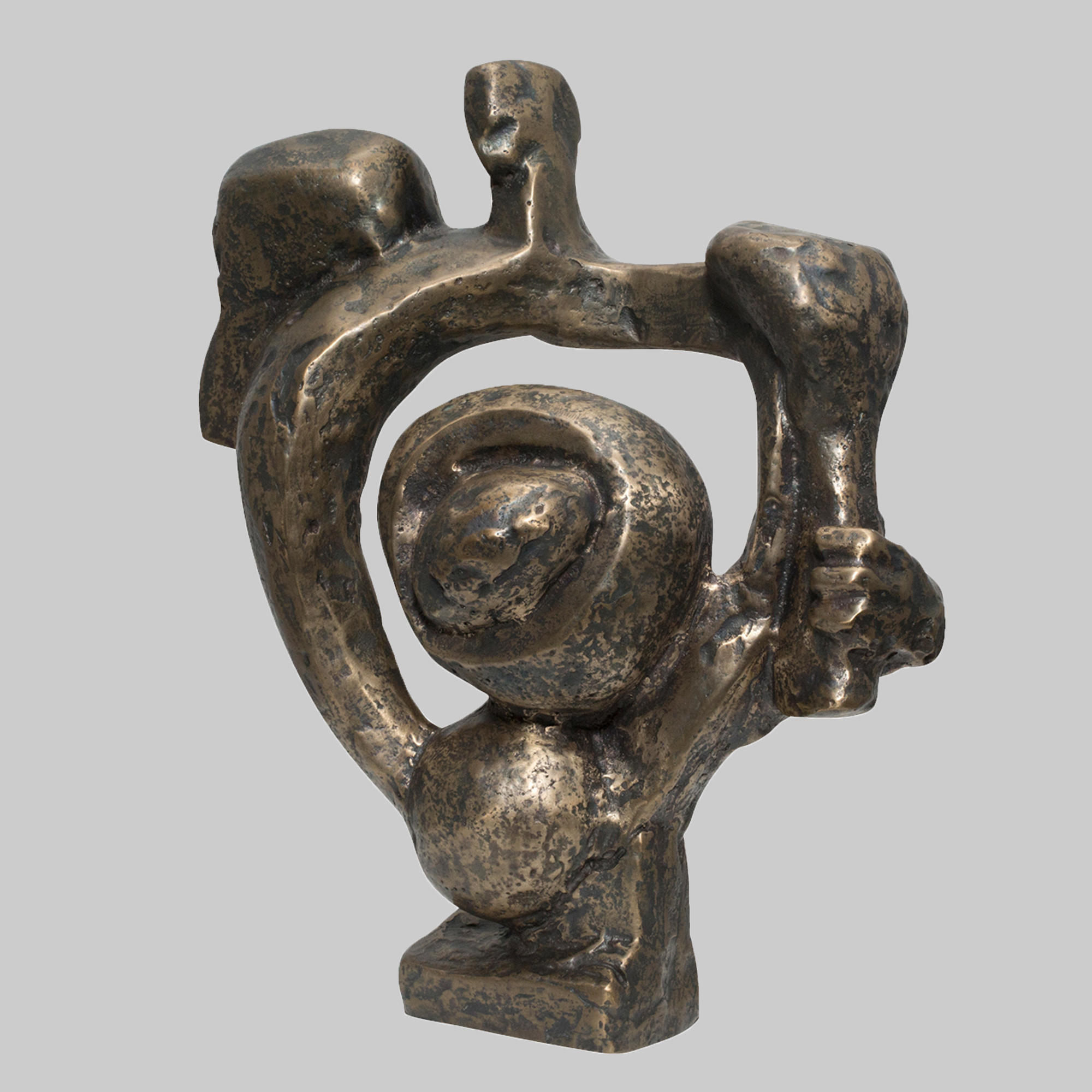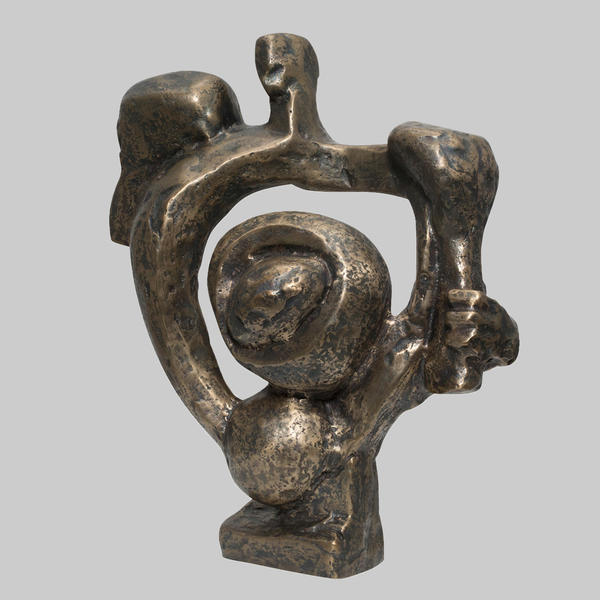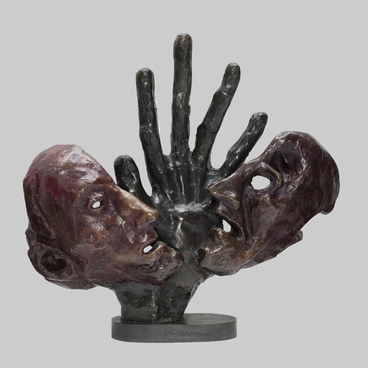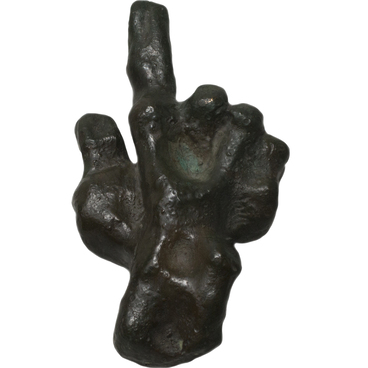Ernst Neizvestny can be called one of the key figures of the rebellious and controversial 20th century, the philosopher of monumentalism, who was always interested in such concepts as the evolution of the world, the history of the universe, the role of man on earth. Neizvestny is the master of creating a radically new type of sculpture, which his compatriots did not understand and accept for a long time.
The tendency to philosophical understanding of the world and a categorical refusal to fit into the framework established by the Soviet regime allowed Ernst Neizvestny to pave his own individual path in art. Unlike many colleagues who succumbed to the conditions of harsh ideological totalitarianism, Ernst Neizvestny did only what he considered necessary and what he liked.
According to the artist, in his childhood he painfully wanted to understand what infinity is. The void was frightening, and the future sculptor tried to imagine the universe in the form of countless human bodies that are inside one another. A space without end and edge - how can this be?
The work Sphere within a Sphere is an echo of a child’s desire to replace the void with an infinite material component. The center of the sculpture is a sphere resembling a depersonalized head. As in other works, the artist mixes with ease abstract with realistic details - the human hand is clearly visible in the composition, firmly gripping an object that reminds of a torch.
Attempts to imagine emptiness don’t leave the master even in the period of his early career. The dominant feature of many sculptures of the creator is hollow space. One of such monuments with an ethereal middle is the famous Lotus Flower on the Aswan Dam in Egypt. During the later periods of his career, Ernst Neizvestny enthusiastically creates bronze metaphoric sculptures depicting human bodies - expressive, flexible, surreal abstract.
The master was able to cast bronze in an amazing way. His bronze statues look so fluid as if they were molded from plasticine. He himself created his work, without the help of professional casters, because in the 50s he worked in the foundry and knew all the nuances well. Even then, he already tried to cast figures from metal. The artist said that he had nowhere to put trial casts and he kept them on the balcony of his apartment.
Ernst Neizvestny’s bronze is a plastic philosophy. The master said that the monumental bronze is amazingly mobile and reverent. Any line and bend can be embodied in it as truthfully as possible. Preferring non-ferrous metal, he did not forget about other materials. He especially emphasized stone as one of the mysteries of nature. The artist believed that inside of the stone is the soul of the whole sculpture. That is why he often created compositions where the figures were partially placed in unprocessed stone blocks.
Ernst Neizvestny once dreamt of creating a 150-meter building in the form of a Tree of Life, which he dreamed of one of the nights. This failed to materialize, but a miniature copy of the sculptor’s dream adorns the Bagration Bridge in the Russian capital today. A seven-meter metal tree in the shape of a heart consists of several hundred human figures, among which you can see famous personalities of our time
The tendency to philosophical understanding of the world and a categorical refusal to fit into the framework established by the Soviet regime allowed Ernst Neizvestny to pave his own individual path in art. Unlike many colleagues who succumbed to the conditions of harsh ideological totalitarianism, Ernst Neizvestny did only what he considered necessary and what he liked.
According to the artist, in his childhood he painfully wanted to understand what infinity is. The void was frightening, and the future sculptor tried to imagine the universe in the form of countless human bodies that are inside one another. A space without end and edge - how can this be?
The work Sphere within a Sphere is an echo of a child’s desire to replace the void with an infinite material component. The center of the sculpture is a sphere resembling a depersonalized head. As in other works, the artist mixes with ease abstract with realistic details - the human hand is clearly visible in the composition, firmly gripping an object that reminds of a torch.
Attempts to imagine emptiness don’t leave the master even in the period of his early career. The dominant feature of many sculptures of the creator is hollow space. One of such monuments with an ethereal middle is the famous Lotus Flower on the Aswan Dam in Egypt. During the later periods of his career, Ernst Neizvestny enthusiastically creates bronze metaphoric sculptures depicting human bodies - expressive, flexible, surreal abstract.
The master was able to cast bronze in an amazing way. His bronze statues look so fluid as if they were molded from plasticine. He himself created his work, without the help of professional casters, because in the 50s he worked in the foundry and knew all the nuances well. Even then, he already tried to cast figures from metal. The artist said that he had nowhere to put trial casts and he kept them on the balcony of his apartment.
Ernst Neizvestny’s bronze is a plastic philosophy. The master said that the monumental bronze is amazingly mobile and reverent. Any line and bend can be embodied in it as truthfully as possible. Preferring non-ferrous metal, he did not forget about other materials. He especially emphasized stone as one of the mysteries of nature. The artist believed that inside of the stone is the soul of the whole sculpture. That is why he often created compositions where the figures were partially placed in unprocessed stone blocks.
Ernst Neizvestny once dreamt of creating a 150-meter building in the form of a Tree of Life, which he dreamed of one of the nights. This failed to materialize, but a miniature copy of the sculptor’s dream adorns the Bagration Bridge in the Russian capital today. A seven-meter metal tree in the shape of a heart consists of several hundred human figures, among which you can see famous personalities of our time



